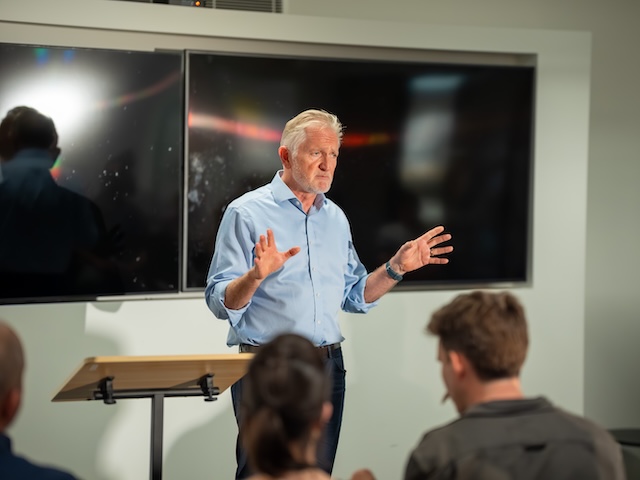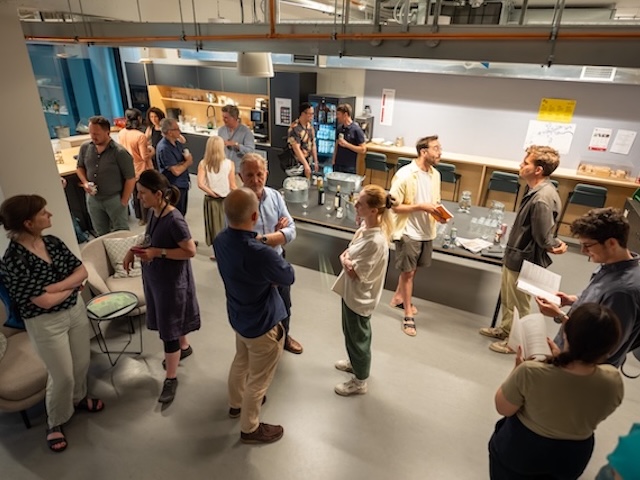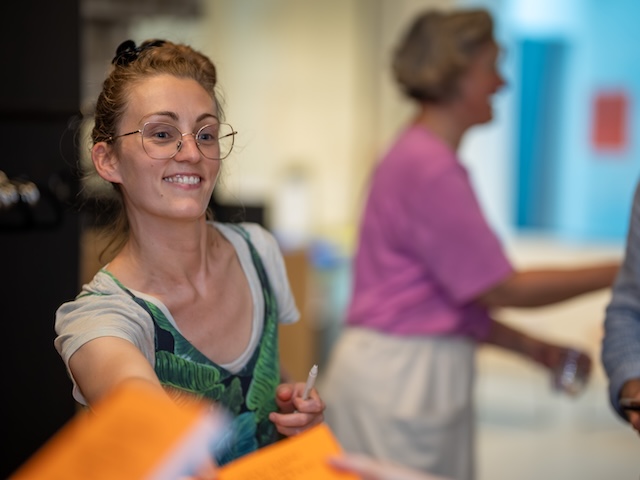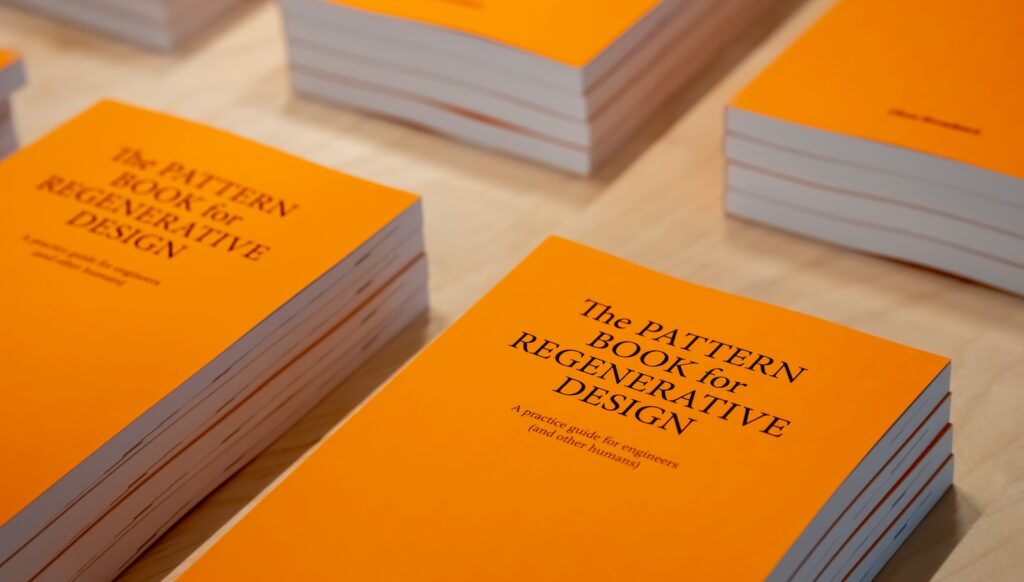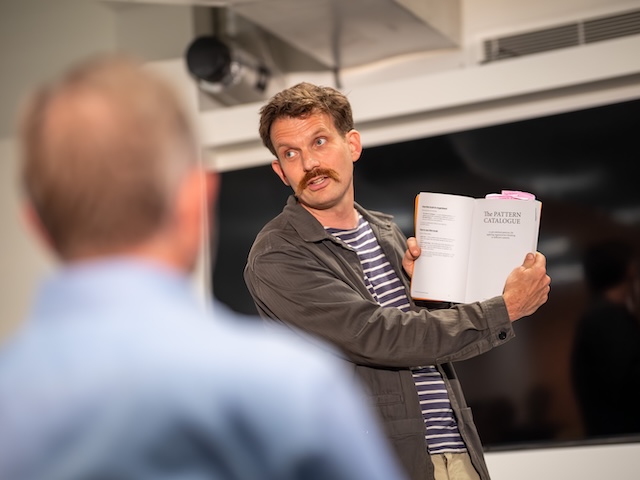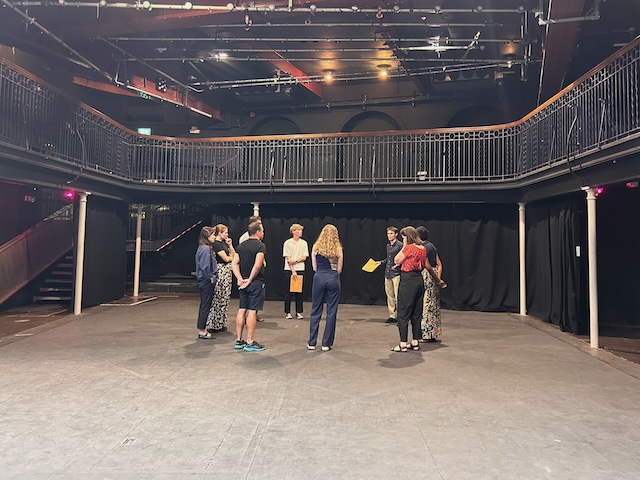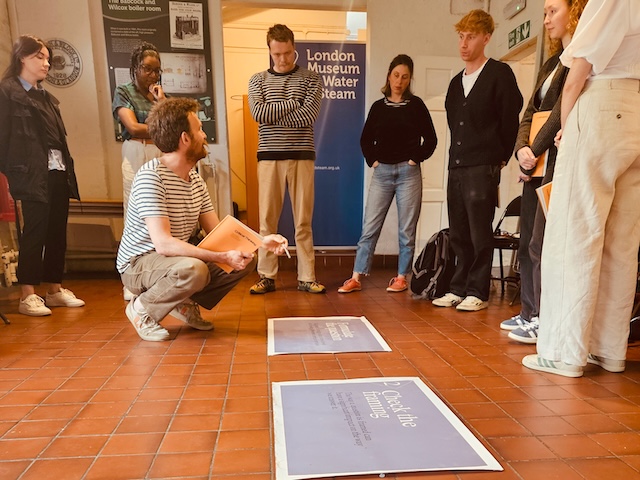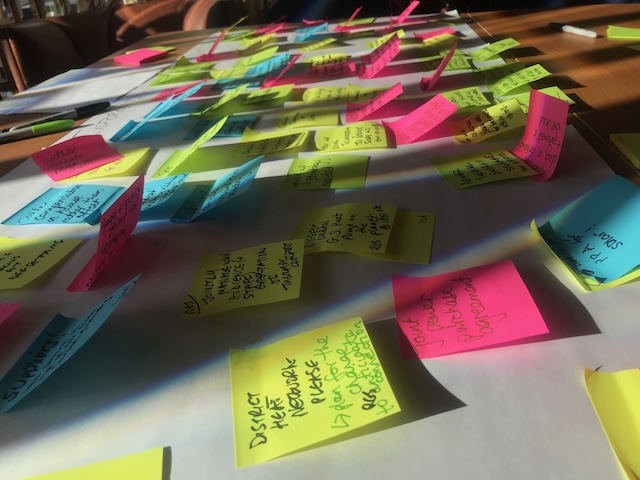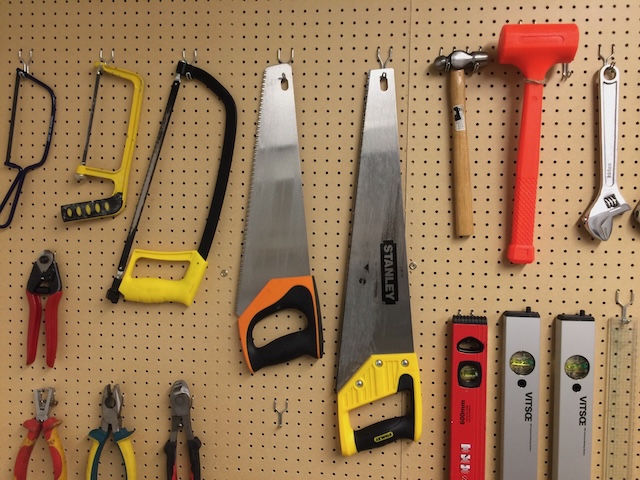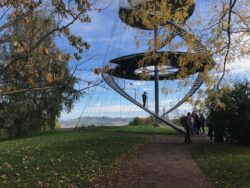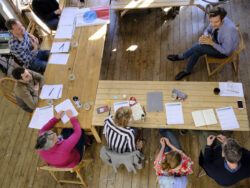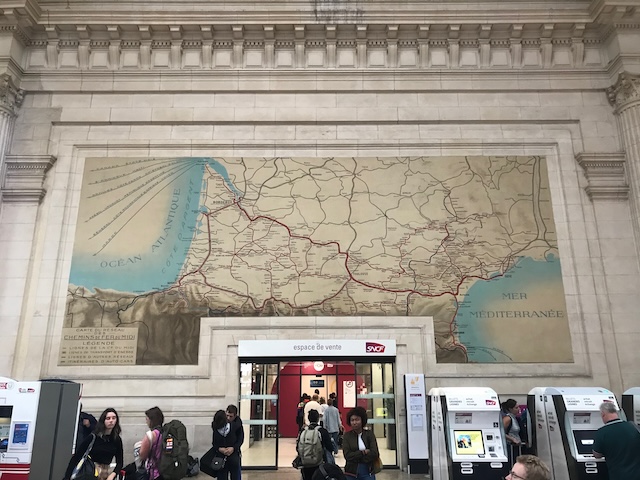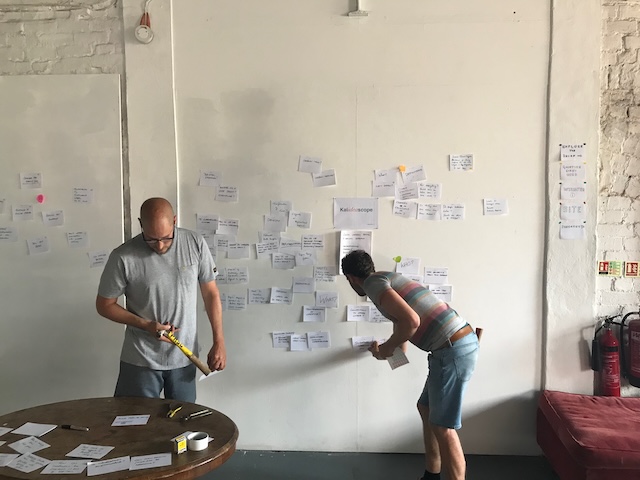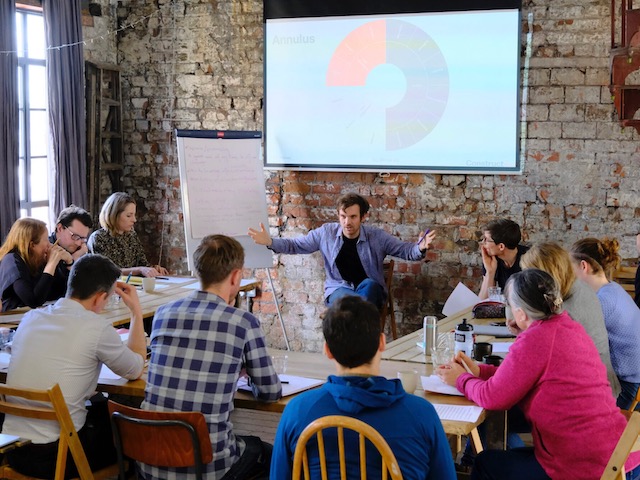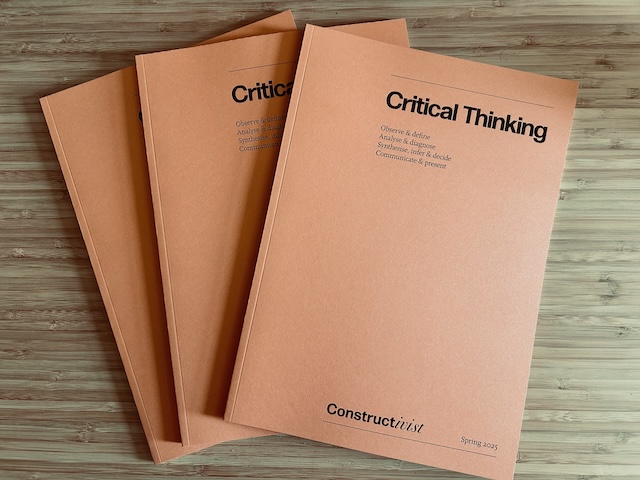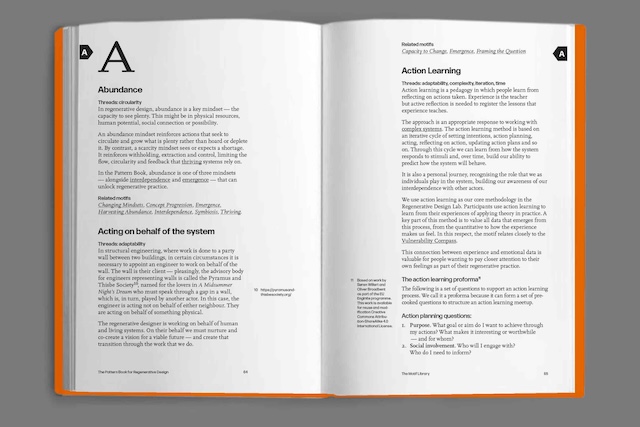This evening we held the London launch for the Pattern Book, hosted by our friends at Elliott Wood in the Society Building.
I often describe the Pattern Book as a build-your-own adventure practice guide for regenerative thinking. And as is befitting this format, the talk I gave was a build-my-own-adventure journey through my favourite short motifs in the book.
And that’s the point of the book. To stitch the motifs together to create a pattern for talking about, practising and bring people on a journey through regenerative design.
My pattern sequence was as follows:
The Goal of Regenerative Design > Beavers > Short-term design from anywhere > Living World > Second Site > Carrier Wave > Harvesting Abundance > Fossil Fuel Friction Free > Practiiice > Systems Survey > Thriving.
In the Q&A there was a question around scaling, in response to which I talked about modularity and scaling out (see my recent post on six-foot slugs). There was also a great question about working with sceptical audiences, which gave me a chance to talk through Pattern 07 Pinstripe — For Developers and Asset Managers.
All of which gives me clues about how I can tweak my pattern sequence for future book talks.
In case you missed the talk, this week on the blog I’ll be serialising some of my favourite short motifs from the talk pattern sequence.
